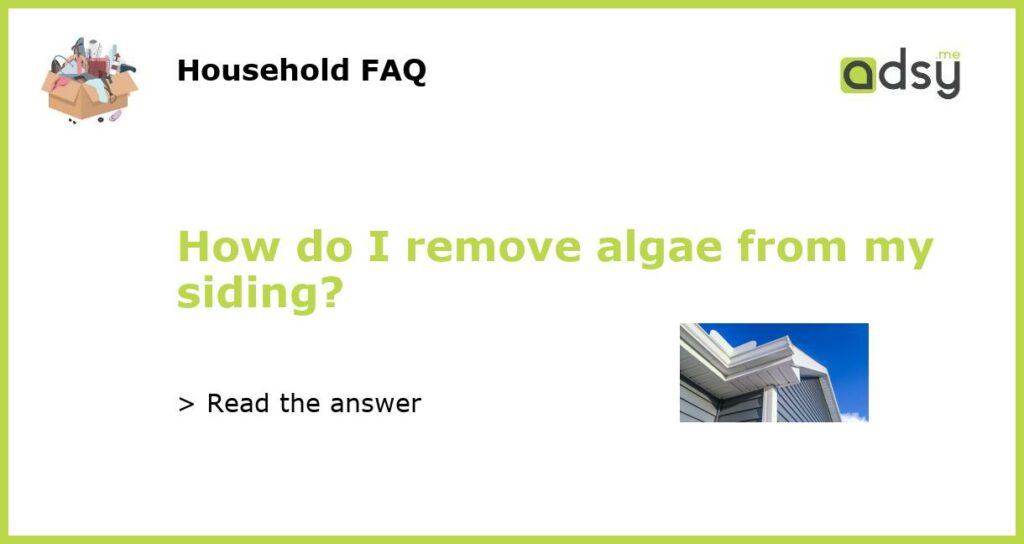Why is algae a problem for siding?
Algae growth on siding is not only unsightly, but it can also cause damage to the surface over time. Algae can thrive in moist and shaded areas, such as the north-facing side of a house or areas with high humidity. If left untreated, algae can spread and create a green or black discoloration on the siding, making your house look dirty and unkempt. Moreover, algae can penetrate the siding material and weaken its structure, leading to cracks or even rot. Therefore, it is important to remove algae from your siding to maintain its appearance and structural integrity.
How can I prevent algae growth on my siding?
Prevention is better than cure when it comes to algae growth on siding. Here are a few tips to help prevent algae from taking hold:
- Trim back trees and shrubs: Algae growth thrives in shady areas, so by trimming back trees and shrubs, you can increase sunlight exposure to your siding, making it less attractive for algae to grow.
- Clean gutters regularly: Clogged gutters can cause water to overflow, creating a damp environment that algae love. Regularly cleaning and maintaining your gutters will help prevent excess moisture around your siding.
- Improve ventilation: Proper ventilation can help reduce moisture levels on your siding. Ensure that vents in your attic and crawl spaces are functioning properly and not blocked.
What are some DIY methods to remove algae from siding?
If you notice algae growth on your siding, you can try these DIY methods to remove it:
- Mix a solution of one part bleach to four parts water and apply it to the affected areas using a soft brush or sponge. Let the solution sit for a few minutes, then rinse it off with a hose.
- Create a paste with equal parts water and baking soda. Apply the paste to the algae-covered siding and scrub it gently with a soft brush. Rinse off the paste with water.
- Vinegar can also be effective in removing algae. Mix equal parts white vinegar and water, and apply the solution to the siding using a spray bottle. Let it sit for 10-15 minutes, then rinse it off.
When should I consider professional help?
If the algae growth on your siding is extensive or if the DIY methods mentioned earlier do not yield satisfactory results, it may be time to consider professional help. Professional power washing services specialize in removing algae and other stains from siding using high-pressure water streams. They have the necessary equipment and expertise to thoroughly clean the siding without causing damage. Additionally, professional cleaners may use environmentally friendly products that are effective in removing algae without the use of harsh chemicals.
How can I maintain a algae-free siding?
Once you have successfully removed algae from your siding, it is important to take steps to prevent its recurrence and maintain a clean appearance. Here are some tips to help you maintain an algae-free siding:
- Clean your siding regularly: Regularly washing your siding with a mild detergent and water can help prevent algae from taking hold. This is especially important in areas prone to high humidity or excessive shade.
- Inspect and repair any damage: Cracks or gaps in your siding can provide a favorable environment for algae growth. Inspect your siding regularly and repair any damage promptly to prevent algae from penetrating the material.
- Consider applying a preventative treatment: There are algae-resistant coatings available that can be applied to your siding to help inhibit algae growth. Consult with a professional or visit your local home improvement store for suitable options.

